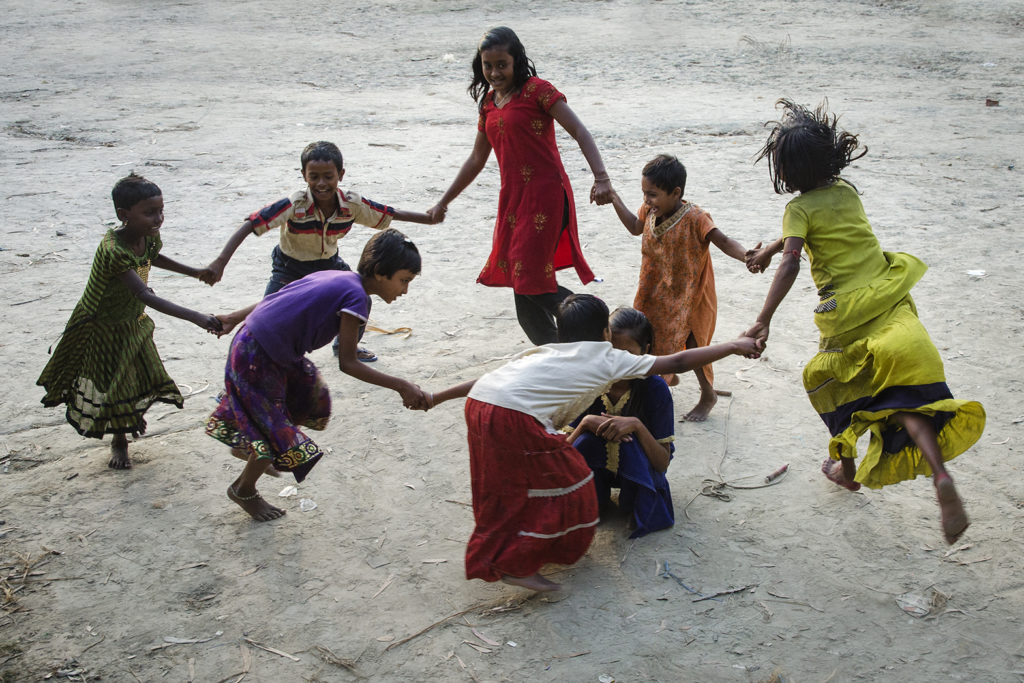
Sanlaap is one of the foremost organizations fighting against human trafficking all across South Asia, especially in the Indian subcontinent. It has been a pioneer in not only devising effective strategies to combat trafficking but also creating programs that help empower and rehabilitate survivors of trafficking within society. With over 3 decades of grassroots experience in tackling this widespread problem, Sanlaap strives to work every day for a future where young girls no longer have to be weary of this menace in society, a future free of sex trafficking and the sexual exploitation of children.
Our work in the Red Light areas of Kolkata, the Districts of West Bengal and a few States across the country define our prevention strategy. We work with different stakeholders including children, youth members, community, local and district administration, State and National Administration, Government Officials, Police, Border Security Force and SeemaSurakshaBal among others. Our SANLAAP was founded by IndraniSinha, one of the most eminent names in the development sector all across the world.SANLAAP conducted a study of sexually abused girl children in the red light areas of Kolkata in 1989 and spent the subsequent years tirelessly formulating, innovating and establishing different processes of fighting against trafficking. The first Drop in Center (DIC) was bult in 1992 followed by a shelter home for young girls, Sneha, in 1993. Along with the Srijoni Vocational training and income generation program, a Mental Health Intervention Program for trafficked persons was started in 1996. Due to SANLAAP’s pioneering role in combating trafficking, many government institutions and entities like United Nations Development Program have regularly collaborated for various kinds of work. As the years passed, SANLAAP’s work expanded beyond West Bengal and all across India. Currently, it is involved with anti-trafficking initiatives and grassroots activities all across South Asia.

A thriving youth program including multiple centers, a Legal Aid Program, training programs for police personnel-BSF-judges-ICDS Anganwadi workers and various other collaborations have paved the way for SANLAAP to establish itself as an important policy influencing institution in South Asia today. It has also won the National Award twice for ‘Child Welfare’ in 1997 and ‘Women’s Empowerment and Promoting the Cause of Women’ in 2002.

Indrani Sinha (1950-1987)
Indrani Sinha, the founder of SANLAAP, was born in Kolkata on 15th March 1950. After finishing her education at Jadavpur University and completing post-graduation diplomas in several disciplines, she began her professional career as an English teacher at Tantia High School in 1972. Later, She switched over to the field of development in 1977. She worked for Terre des Hommes, Lausanne, Lutheran World Service, Mennonite Central Committee and Oxfam U.K. until 1987. She is one of the most revered names in the field of women’s development with her path-breaking grassroots interventions being recognised all across the world.
She also contributed as an expert to various national and international platforms like National Advisory Committee on trafficking for the Ministry of Women & Child, Planning Commission, ECPAT International, IWID (Gender Development Initiative) and many others. She authored and edited many significant researches on trafficking bringing forth the complexity and vulnerability of the lives of trafficked women and children. She was selected as one of the “One Thousand Women for Peace” by an International Committee in 2007.
On 22nd August, 2015, she left this world leaving behind her husband, three children, a daughter-in-law, her favourite grandson and the entire SANLAAP family to continue her glorious legacy and pioneering work
